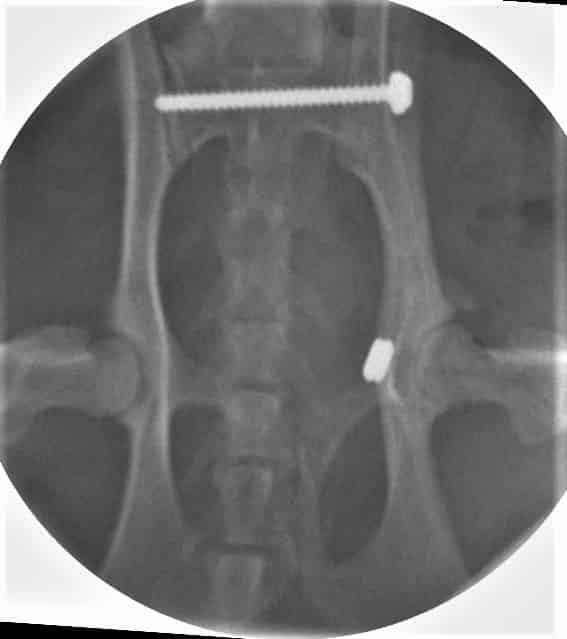Tiger’s traumatic time
Tiger is a beautiful 2-year-old cat that was found collapsed by a neighbour in July 2021. They presumed that she had been hit by a car so they immediately rushed her to the local vet while her owners were contacted.

On examination by Tiger’s vet, she was unable to walk, she had no sensation in either of her hind limbs, she had a rapid heart rate and was pale. The thermometer was unable to obtain a reading, so she was given pain relief and fluids, and was placed in an incubator with oxygen support and warming aids to increase her temperature and help stabilise her heart rate. A quick x-ray was taken which showed that Tiger had suffered a fractured pelvis and a dislocated hip.
Tiger’s owners were now present and were given the option for referral, which they accepted. Tiger was immediately referred to us in Hampshire and once she was stable and fit to travel, her owners brought her down to see our Head of Orthopaedic Surgery James Grierson.
James examined Tiger from nose to tail. Blood test results appeared stable, but James was concerned about Tiger’s lack of sensation and movement in her hindlimbs.
Tiger was monitored closely and continued with her pain relief and fluids. Although Tiger needed surgery to repair her fractures, she was not stable enough to be taken to theatre. She was unable to urinate on her own and her bladder was regularly expressed by our nursing team.
The following day Tiger was showing significant improvement. She was brighter and was starting to show some voluntary movements in her hindlimbs. Blood tests were repeated and further x-rays were taken so that James could see the full extent of the fractures.
Tiger appeared to be comfortable and she was showing some movement in her legs, meaning that she now had some feeling in her hindlimbs. Repeated blood tests showed that Tiger was now anaemic, a common issue after a road traffic accident, usually caused by some internal bleeding secondary to broken bones. Her red blood cell count was monitored and the following day it had decreased to a dangerous level, so Tiger was given a blood transfusion before being taken to surgery to repair her fractures and her dislocated hip and for James to check for any internal bleeding. Her pelvic fractures were stabilised with a large screw and her hip was replaced and secured with a toggle (a surgical procedure to keep the hip joint in its socket).
Tiger’s surgery with us at Anderson Moores went well and she continued to be closely monitored for her bladder issues, as this may have needed intervention in the future. That night, Tiger passed urine on her own, unaided, for the first time since her accident. This was a really promising sign. Tiger was assessed and treated by our physiotherapy team, and a physio plan was created to help aid Tiger’s recovery.

After seven days of being hospitalised, Tiger was well enough to be discharged and was able to continue her recovery at home. Her bladder issues were slowly resolving, but Tiger’s owners were advised to monitor this closely, and contact us immediately if they had any concerns.
Tiger was not happy about her ‘strict cage rest’ and vocally protested to her owners throughout the day and night. Little did she know that this confinement was for her own good, and is vitally important to increase her chances of a full recovery.
A week later, Tiger’s owners reported that she was much more herself, she was able to urinate on her own and she had a good appetite, although she was still vocal and complaining!
Tiger was taken back to her local vet for a check-up, and returned to AMVS after 6 weeks of cage rest. Tiger was walking well and did not appear to be in any pain. Her pelvis was stable and symmetrical. Tiger was now allowed out of her cage, but needed to be kept inside for another four weeks, before she could finally be let outside again.